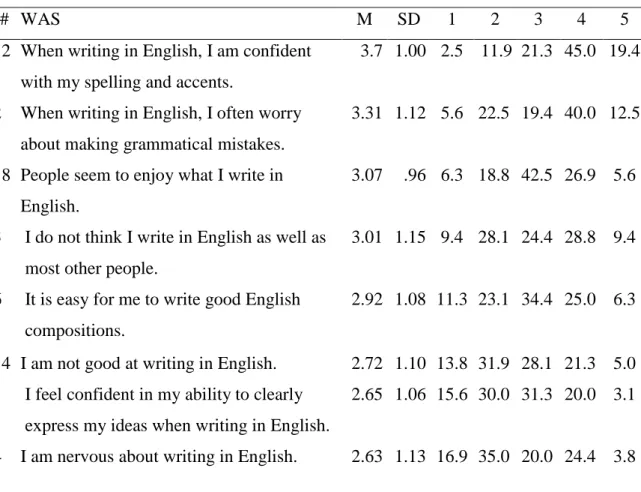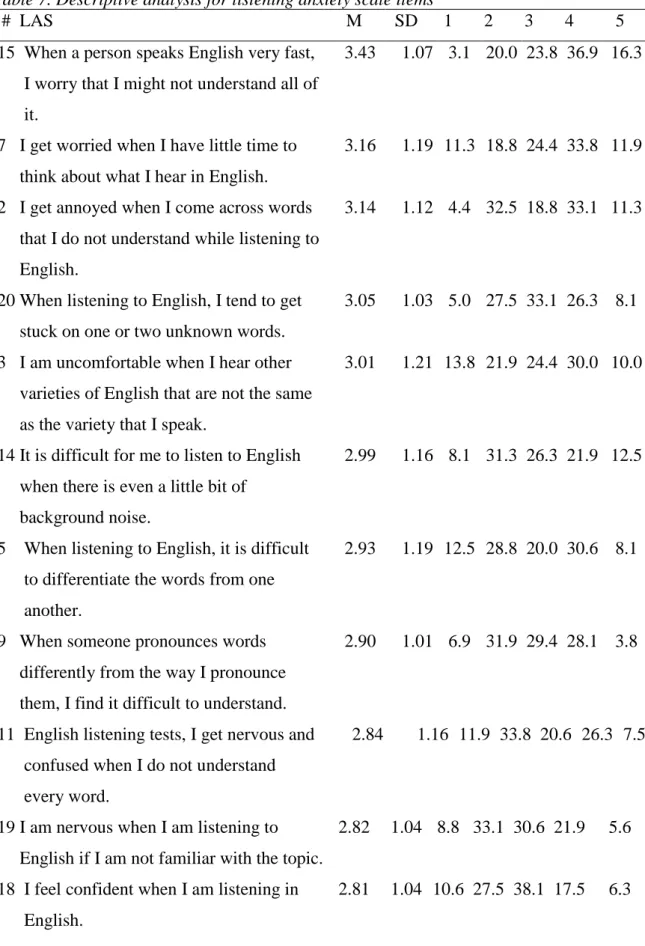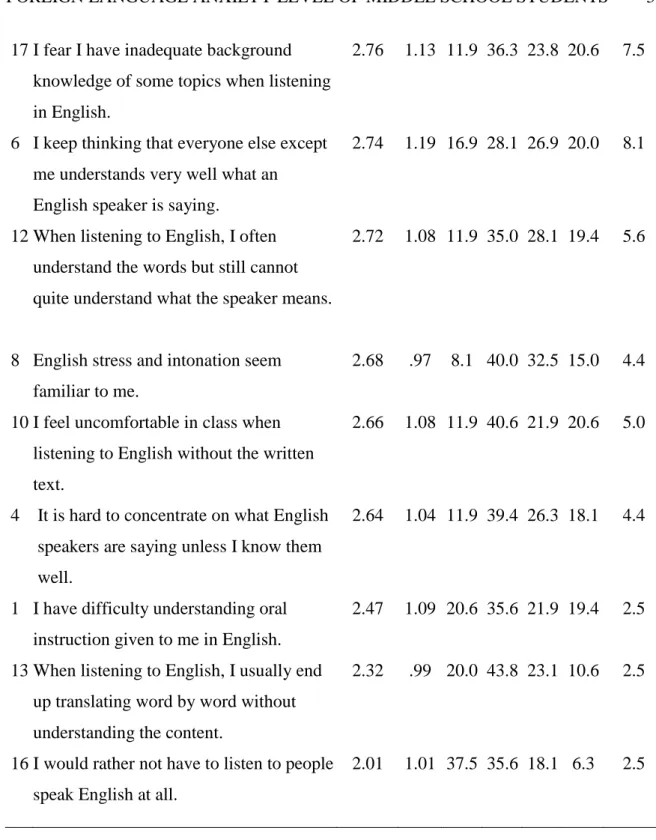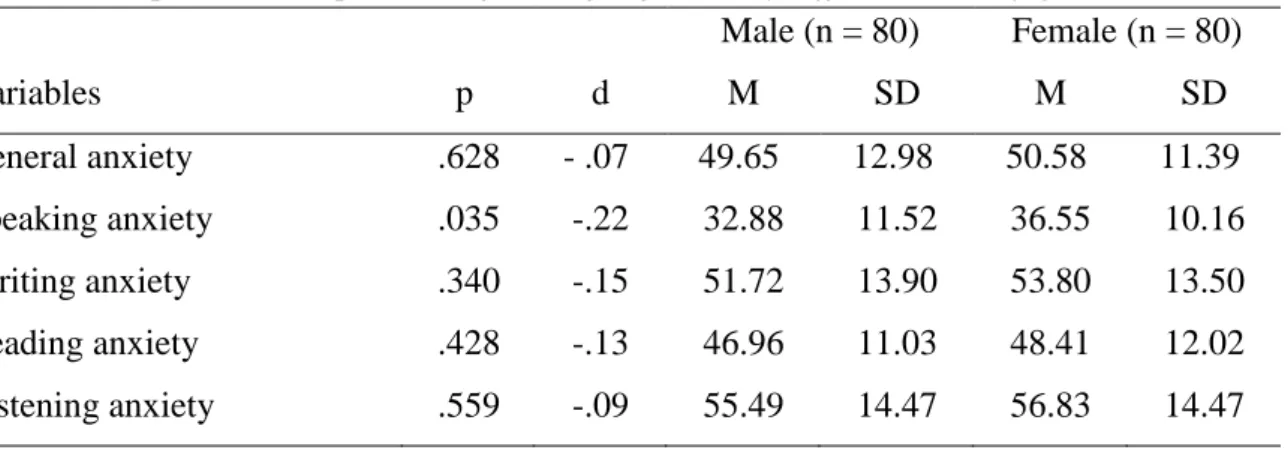The purpose of the study was to investigate the level of foreign language anxiety experienced by students of a specialized school for gifted students in Northern Kazakhstan. In addition, high levels of general language anxiety were found to be associated with low levels of overall achievement in English.
Introduction
A significant amount of research conducted in the field of foreign language anxiety argues that language anxiety significantly affects foreign language performance. Little or no research has been done to find out whether Kazakh students experience foreign language anxiety in the English classroom.
Literature Review
In the study, Capan and Karaca (2013) examined the correlation between the duration of study and the level of foreign language anxiety, revealing that the longer it takes. A significant number of scholars in the studies explored various techniques to reduce language anxiety in a foreign language class.
Methodology
The target population of the study was high school students at a specialized school for gifted students in the north of Kazakhstan. This part of the questionnaire included the Foreign Language Classroom Anxiety Scale (FLCAS) (Horwitz, Horwitz, & Cope, 1986) (see Appendix 2), which was created specifically to measure the level of language anxiety students may experience in a foreign language class. . The third part of the questionnaire was devoted to the Writing Anxiety Scale (WAS) created by Cheng, Horwitz and Schallert (1999) (see Appendix 4).
The scale was intended to measure the level of students' writing anxiety in the context of the foreign language and included twenty questions with five possible options ranging from 'Strongly agree' (1) to 'Strongly disagree' (5), for example “When I write in English, I often worry about making grammatical mistakes”. The fourth item of the questionnaire was the Reading Anxiety Scale (RAS), developed by Saito, Horwitz, and Garza (1999) (see Appendix 5). The fifth part of the questionnaire was devoted to the Listening Anxiety Scale (LAS), developed by Kim (2000) (see Appendix 6).
In order to ensure the confidentiality and anonymity of study participants, the following measures were implemented. In order to ensure confidentiality, the researcher never mentioned in the research report the exact name of the specialized school for gifted students in the north of Kazakhstan that was selected for the research. Thus, no one from the administration or teaching staff had access to the collected data.
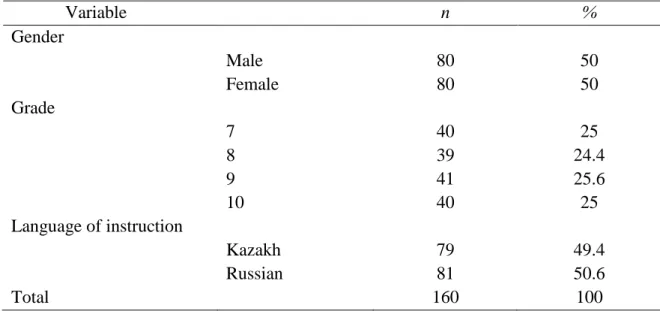
Results
Considering all the results, general language anxiety, speaking anxiety, writing anxiety, reading anxiety and listening anxiety are significantly related, and the increase in the level of one of the types of language anxiety inevitably causes an increase in the level of all other types of language anxiety. . A series of five One-way Between-subject Variances (ANOVA) were conducted to determine whether there is a statistical difference in overall English language anxiety in speaking, writing, reading and listening within groups of years of study. As for the dependent variables, they were calculated based on total scores in general, speaking, writing, reading and listening anxiety for the English language.
Cross-subject effects for language anxiety according to years of schooling. A series of five one-way between-subjects analyzes of variance (ANOVAs) were conducted to determine whether there was a statistical difference in general English language anxiety in speaking, writing, reading, and listening within grade groups. Overall, these results indicate that students who attended 9th and 10th grade had different levels of general language anxiety than those who attended 8th grade.
However, 8th grade students are most concerned about general language and speech anxiety. Results showed a modest negative relationship between students' self-reported speaking achievement and all types of language anxiety (general, speaking, writing, reading, and listening anxiety). Overall, the modest negative correlation between English speaking achievement and all types of English language anxiety demonstrates that speaking performance depends on the level of general language anxiety and the level of anxiety they feel when speaking, writing, reading or listening.
The level of English language anxiety in students from the special school for gifted students in North Kazakhstan is average. The increase in the level of one of the language anxiety types is inevitably connected with an increase in the level of all the other types of language anxiety.

Discussion
Interpretation of key findings and linkage to the literature. Ozturk & Gurbuz, 2013; Suleimenov, 2012; Young, 1991), who found that students identified speaking as the most provoking source of anxiety. The low level of speaking anxiety in the current study can be explained by the school-wide implementation of the communicative approach to teaching and learning English. The presence of international teachers certainly creates an English-language environment for communication inside and outside the classroom.
Therefore, each lesson aims to develop students' speaking skills, regardless of which language skill it focuses on. For example, before writing anything, students read, discuss, reflect, brainstorm, and they always share ideas through communication and collaboration. The level of language anxiety increases because in a foreign language class, students fear making mistakes, failing tasks due to high expectations, being evaluated negatively and falling behind others (Khattak, 2017; . Lo, 2017; Marcos-Llinas & Garau, 2009; Riasati, 2011).
The shorter the students' experience of studying in this school, the higher the level of anxiety in writing, reading and listening.
Regarding English speaking, the results of this study prove that students who have been in school for 2-3 years experience higher levels of English language anxiety and feel even more anxious than newcomers when speaking. An explanation of this finding could be the fact that newcomers during their first year at school are surrounded with a lot of care and support by teachers to ensure that the adaptation period is as painless as possible, while when they are 2-3 students year, are expected to meet all the high requirements of the educational program.
Therefore, 7th graders are beginners, and to make the adjustment period for these students as painless as possible, teachers will likely play more games and make concessions in terms of strict learning requirements during the first year. While the students in the 8th grade are supposed to be already adapted to high demands of the curriculum developed for students with a high level of language competence.
However, an interesting phenomenon is that grade 8 learners feel that they speak more. discomfort as a 7th grader, which may be explained by the fact that mainstream school students go through the procedure of competitive selection to receive the Award of the first President and become the students of the 7th grade at the special school for gifted children. Moderate relationship between language anxiety. 2017) conversely found that language level had no influence whatsoever on students' levels of foreign language speaking anxiety. Moderate relationship between all concerns and speaking performance may be due to the communicative approach implemented in the class when speaking is involved in the development of all the four aspects of the language by means of pronunciation, foreshadowing, expression of opinion, questioning, and so on.
Therefore, if students lack confidence in any of the language components, this is likely to negatively impact speaking performance and vice versa. Another finding made it clear that the increase in the level of writing anxiety is likely to have a negative impact on the quality of writing performance, or vice versa: a decrease in the level of writing anxiety caused an increase in writing performance (Tallon, 2006). In contrast to Tallon (2006) who in his research discovered a link between self-rated listening skills and the level of listening anxiety.
Similarly, Kim (2000) included in her study 238 students studying English as a foreign language and found that listening anxiety was significantly related to the students.
Conclusion
RQ2 concerned the factors that influenced the language anxiety of students in English classes. RQ3 concerned the influence of foreign language anxiety on students' self-reported speaking, writing, reading and listening performance in the English language. Although middle school students experienced a moderate. anxiety level, the foreign language anxiety still existed.
Therefore, teachers should always think about developing an anxiety-free atmosphere in the classroom in order to reduce the level of language anxiety in English classes to a minimum. Overall, this study found that the level of foreign language anxiety experienced by high school students was moderate with lower levels of speaking anxiety and slightly higher levels of other types of language anxiety. Effects of social context on foreign language anxiety among university English learners in Hong Kong.
Fear of foreign languages among Spanish heritage students: to be (anxious) or not to be (anxious). THE FIRST PART OF THE QUESTIONNAIRE CONCERNING PERSONAL DATA OF PARTICIPANTS Foreign language anxiety level of high school students. In each section, please tick the box that best describes you. Your child can benefit from the research because this research will help English teachers enrich their awareness of foreign language anxiety in the context of Nazarbayev.
The purpose of the study is to investigate the level of language anxiety of NIS secondary school students in North Kazakhstan and to identify the main factors that provoke it in relation to their productive and receptive skills, such as speaking, writing, reading and listening. English language learning. You can benefit from the study because this study will help English language teachers to enrich their awareness of foreign language anxiety in the context of Nazarbayev.

